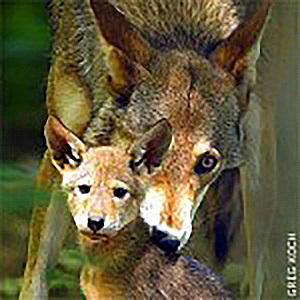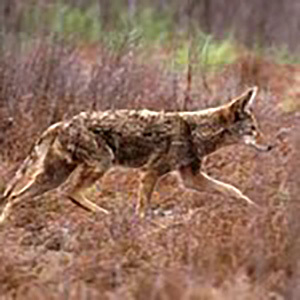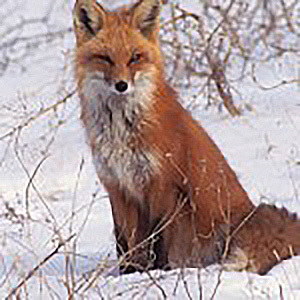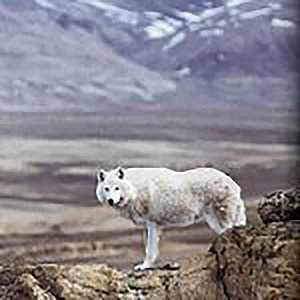Wolves
الجسم
Wolves are the largest members of the canid family. This is the species from which our pet dogs were domesticated. Wolves were once the most widely distributed, wild terrestrial mammals. They inhabited most of the available land in the northern hemisphere. Due to the destruction of their habitat and persecution by humans, they now occupy only about two-thirds of their former range worldwide, and only about 5-8 percent of the contiguous 48 United States.
Common names
Unlike scientific names, common names are not always unique and vary by culture and geographic region. For example, a gray wolf living in a forested area might be called a “timber wolf” while a gray wolf living on the tundra might be called a tundra wolf.
Arctic gray wolf
Wolves can be found in a variety of climates and habitats. These habitat variations are sometimes seen in the type of morphology, or physical characteristics, seen in gray wolves living in different geographical areas. These differences sometimes differentiate types, or subspecies, of gray wolves around the world.
However, these different types are so subjective that over the years scientists have disagreed as to whether in North America alone there are 24 such subspecies or only four. Current workers generally accept five, but a recent article lumped those into four. Subspecies of gray wolves in North America include the Arctic wolf (Canis lupus arctos), northwestern wolf (Canis lupus occidentalis), Great Plains wolf (Canis lupus nubilus), Mexican wolf(Canis lupus baileyi) and the eastern timber wolf (Canis lupus lycaon), which is debated by some as a distinct species, the eastern wolf (Canis lycaon). In reality, any differences among all these proposed types are so minor as to be meaningless except to a few specialists.
Red wolves are only found in a small area of coastal North Carolina. They are a North American species of wolf not found elsewhere. Their social and predatory behaviors are the same as gray wolves.
Canids of North America
The canid family consists of thirty-five living species. Eight of these species inhabit North America. These North American species include gray wolves, red wolves, coyotes, red foxes, gray foxes, kit foxes, swift foxes and arctic foxes. The eight species may be organized in three general categories: wolves, coyotes and foxes.
Coyotes (Canis latrans) are smaller than most mature wolves. Resilient animals, they have higher population numbers and inhabit a much larger range than do wolves. Coyotes are able to
adapt to change and have a strong tolerance for human encroachment. Many people have used the terms “brush wolves” or “prairie wolves” when referring to coyotes. Coyotes, however, are not wolves. Coyotes and wolves are in the same family (Canidae) and genus(Canis), but are separate species, just as foxes and wolves are separate species.
Like wolves, coyotes have been persecuted because of their predatory nature. They are still trapped and killed in predator control programs throughout North America but continue to thrive.
Foxes
Foxes match the coyote’s ability to cope with civilization. Foxes are in the same family as wolves and coyotes (Canidae) but not the same genus. Gray(Urocyon cinereoargenteus) and red (Vulpes vulpes) foxes inhabit about three-quarters of the United States. Swift (Vulpes velox) and kit (Vulpes macrotis)foxes inhabit only small portions of the western United States. Arctic foxes (Alopex lagopus) live in the northern portions of Canada, Alaska and outlying areas of Greenland.










تعليقات